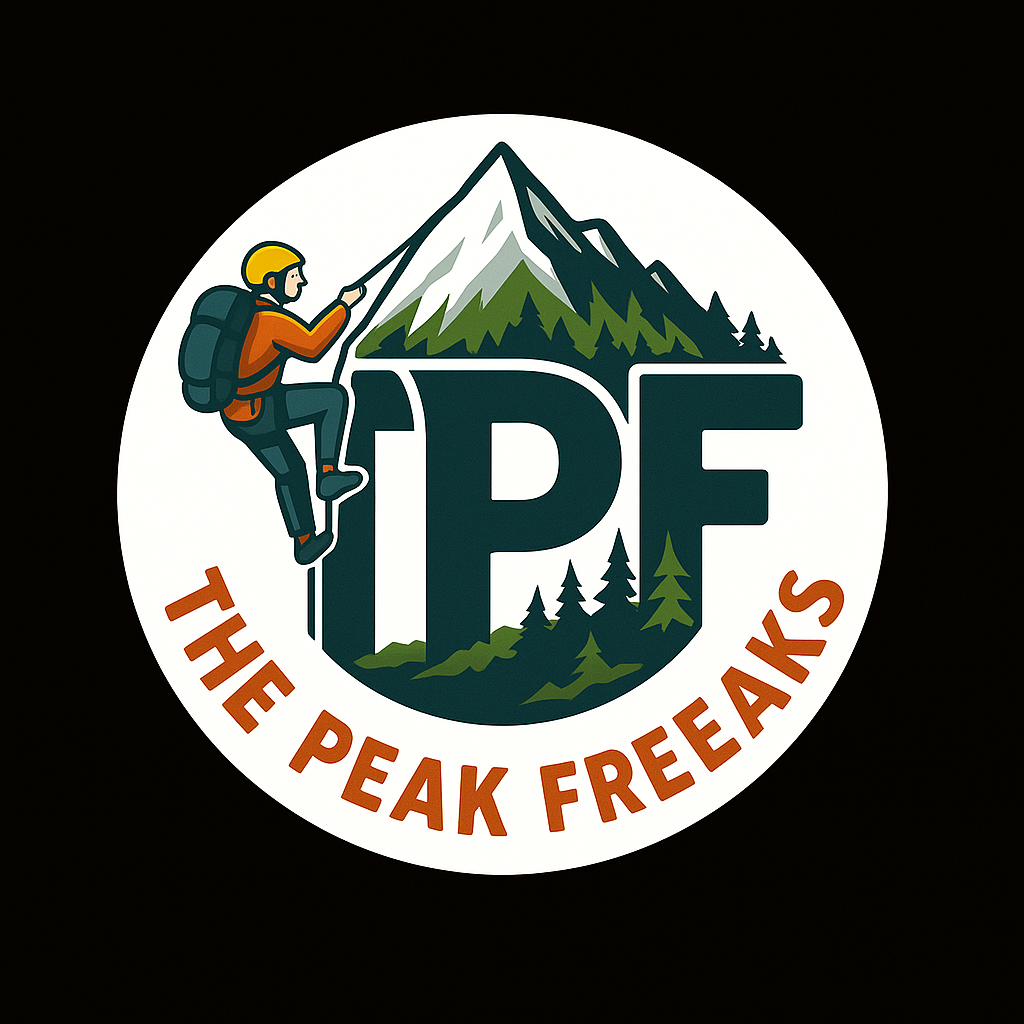Mt. Hanuman Tibba Expedition
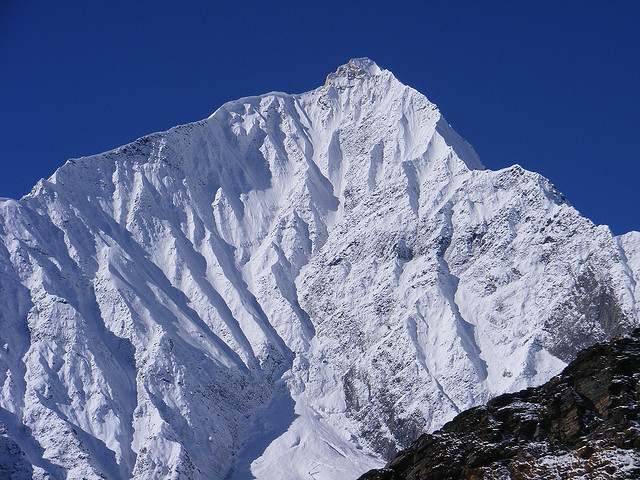
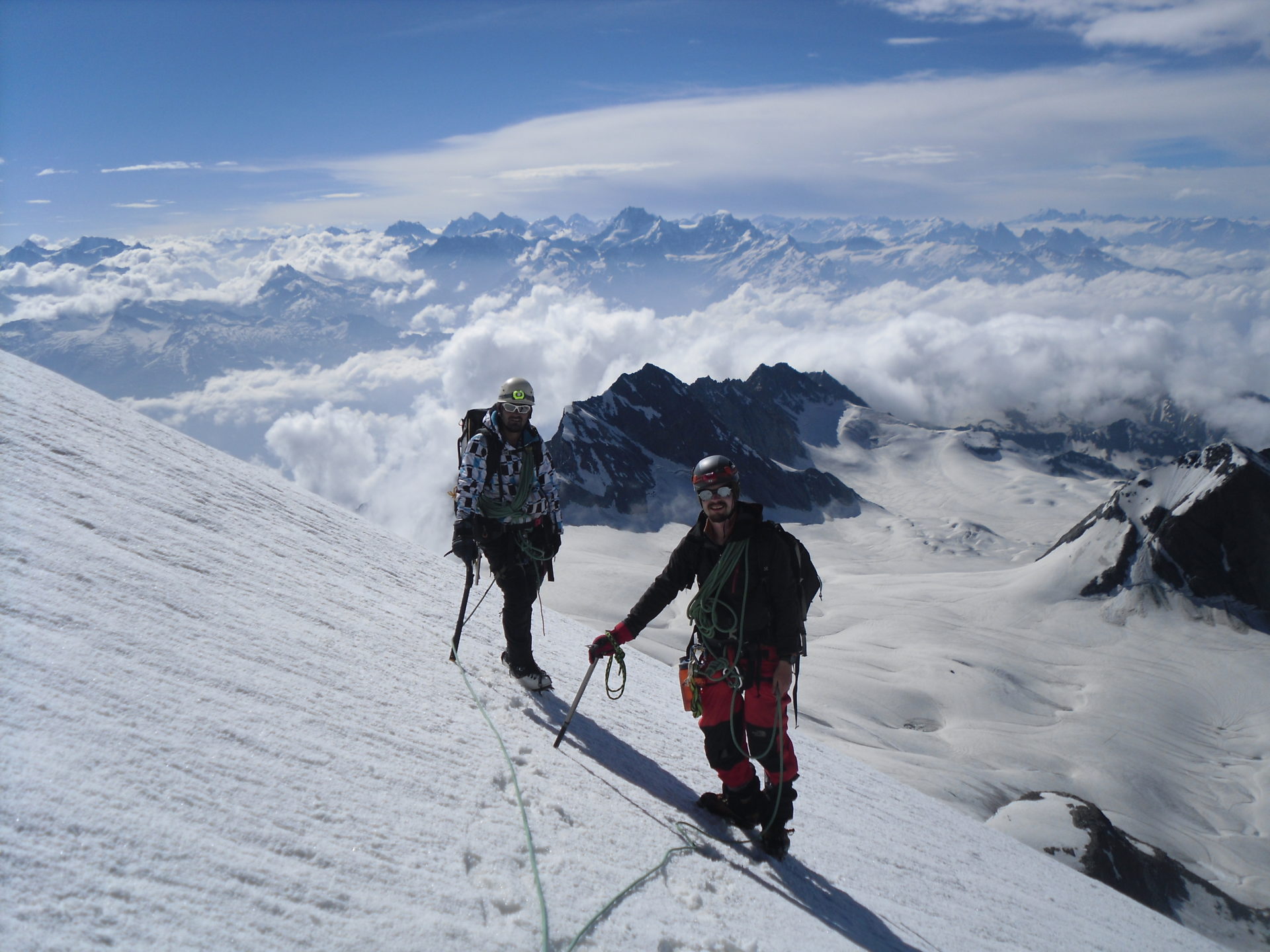


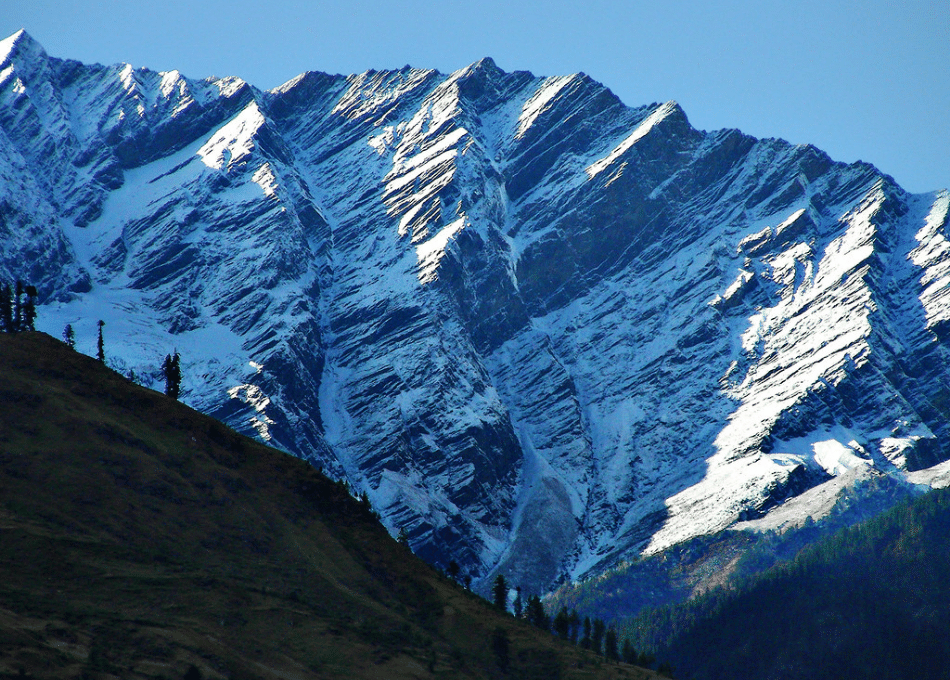
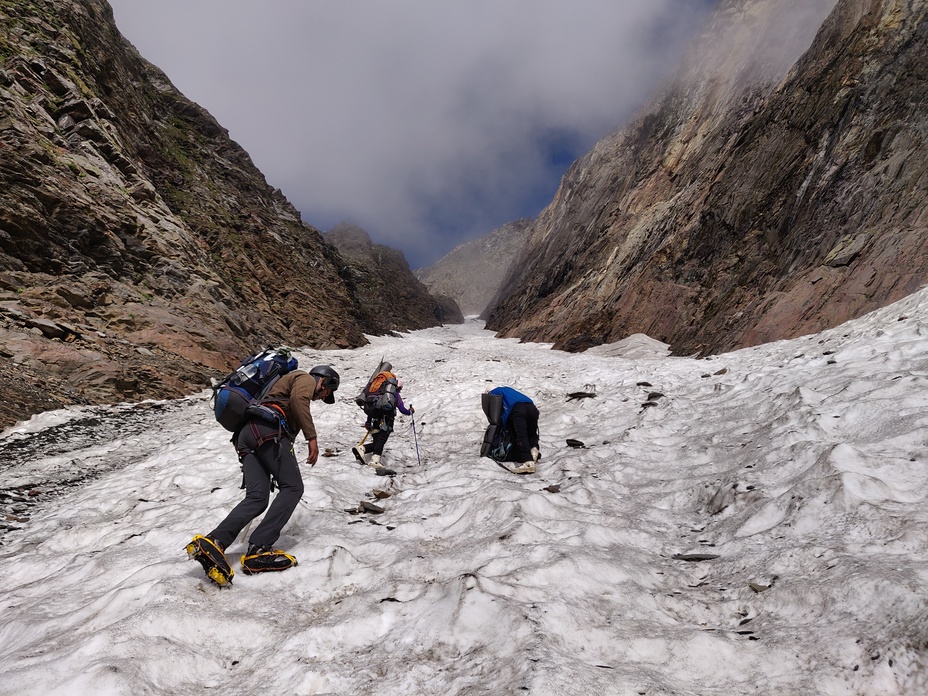
from
(Rs.59,999)
Duration
(13D/12N)
Height
(19,630′ft)
Distance
(34kms)
Overview:
Hanuman Tibba (5,982 meters / 19,626 feet) is the highest peak in the Dhauladhar Range of the Western Himalayas, located northwest of Manali in Himachal Pradesh. It towers dramatically over the Solang Valley and Beas Kund basin, offering breathtaking views of neighboring giants like Deo Tibba (6,001 m), Indrasan (6,221 m), and the extended Pir Panjal and Dhauladhar ranges.
Unlike easier weekend treks such as Nag Tibba or Kheerganga, the Hanuman Tibba Trek is a true high-altitude mountaineering expedition that tests endurance, skills, and mental grit. The trek offers an unforgettable blend of meadows, moraine fields, glacier crossings, and technical climbs, making it a rewarding yet challenging experience for seasoned trekkers and mountaineers alike.
📍 Geography & Setting
- Starting Point: Solang Valley (around 2,500 meters)
- Approach: Follows the Beas Kund Trail initially, then diverges towards the Lady Leg Glacier route.
- Terrain: Alpine meadows, rocky moraines, steep snowfields, glacier crossings, and final summit push on ice and snow.
- Summit Views: Deo Tibba, Indrasan, Friendship Peak, Ladakhi Peak, Shitidhar, Manali Peak, and endless Himalayan vistas.
- Base Camps:
- Beas Kund Base Camp — near the sacred Beas Kund lake, the source of the Beas River.
- Lady Leg Camp — a high camp on the glacier, named for its resemblance to a human leg in profile.
- Summit Camp — last staging point for the final push.
🌱 Route & Journey
The journey typically begins in Manali, from where trekkers drive to Dhundi or Solang Valley. From here, the trail to Beas Kund takes you through lush meadows, pine forests, and riverside walks. Beas Kund itself is a serene, high-altitude glacial lake surrounded by snow-capped peaks — a perfect spot to acclimatize.
From Beas Kund, the adventure intensifies as the route ascends towards the Lady Leg glacier. This stretch involves negotiating crevasses, loose moraine, and sections of snowfields, requiring trekkers to be roped up for safety. Once at Summit Camp, climbers prepare for the final summit push — a steep climb on mixed snow and ice, sometimes requiring fixed rope sections and technical equipment like crampons, ice axe, helmet, and harness.
The summit day is physically demanding, often starting around 2-3 AM, with temperatures well below freezing. The reward? An unparalleled panorama of the entire Dhauladhar and Pir Panjal ranges, the Chenab and Beas valleys, and a sense of accomplishment that only comes from conquering one of the Himalayas’ mighty giants.
🌌 Expedition Vibe
Hanuman Tibba is not just a trek — it’s a mountaineering expedition. You’ll experience:
- High-altitude camping on snow and moraine fields.
- Glacier navigation with potential crevasse rescue practice.
- Team dynamics, as climbers often rope up and share responsibilities.
- Technical skills including use of crampons, ice axes, and belaying.
- Unpredictable weather — sudden snowstorms, whiteouts, and sub-zero temperatures.
This is why it’s recommended for experienced trekkers who are comfortable with high-altitude conditions and have at least some prior exposure to snow and technical equipment.
🙌 Who Should Attempt It?
✅ Experienced trekkers who’ve already done high-altitude treks (above 4,500 m).
✅ Aspiring mountaineers looking to step up from trekking to technical climbs.
✅ Fitness enthusiasts who can sustain 6-8 hours of hiking on steep, rugged terrain.
✅ Adventure seekers craving raw, off-the-beaten-path Himalayan experiences.
🌟 Trek Highlights
✅ Highest Peak in the Dhauladhar Range — Hanuman Tibba stands at 5,982 meters.
✅ Technical Climb — Requires roping up, use of crampons, and ice axes (with guides or mountaineering team).
✅ Glacier Walks — Cross the Lady Leg glacier and navigate crevasses.
✅ Beas Kund — A sacred high-altitude lake, the source of the Beas River.
✅ Breathtaking Views — Panoramic views of Deo Tibba, Indrasan, Shitidhar, Friendship Peak, and more.
✅ True Expedition Experience — Ideal for trekkers who want to graduate from trekking to mountaineering.
❤️ Why You’ll Love the Nag Tibba Trek
Ultimate Challenge — Perfect for those seeking a serious mountaineering adventure beyond standard trekking.
✨ Raw Himalayan Beauty — Traverse meadows, glaciers, and high-altitude passes in one thrilling journey.
✨ Sense of Achievement — Conquering Hanuman Tibba is a bucket-list achievement for any climber.
✨ Wildlife and Flora — Spot high-altitude flora, and maybe even Himalayan blue sheep or ibex.
✨ Off-the-Beaten-Path — Far fewer crowds than popular treks like Hampta Pass or Beas Kund.
Trek Difficulty Level
The Nag Tibba Trek is considered easy to moderate, making it an excellent choice for beginners and families as well as experienced trekkers looking for a quick weekend adventure.
- Easy: For most of the trail from Pantwari to Nag Tibba Base Camp, the climb is gradual with a well-defined path.
- Moderate: The final stretch from Base Camp to the summit involves a steep ascent that might challenge your stamina a bit, but it’s achievable with some short breaks.
Key Points:
✅ Suitable for first-time trekkers.
✅ No technical sections (no need for climbing equipment).
✅ A basic level of fitness (walking 5-6 hours a day) is recommended.
🗓️ Hanuman Tibba Trek — 13 Days Detailed Itinerary
🌟 Day 1: Arrival in Manali (2,050 m)
- Altitude: 2,050 m
- Meals: Dinner
- Activities:
- Arrive in Manali by road (overnight bus) or air (Bhuntar Airport).
- Transfer to a comfortable hotel/guesthouse.
- Meet trek leader and support staff for a comprehensive expedition briefing.
- Equipment check: crampons, ice axe, harness, helmet, sleeping bags, etc.
- Rest and explore Mall Road and local cafes.
- Overnight: Hotel/Guesthouse in Manali.
🌟 Day 2: Manali – Solang Valley (2,560 m) – Dhundi – Bakarthach (3,300 m)
- Altitude Gain: +1,250 m
- Meals: Breakfast, lunch, dinner
- Activities:
- After breakfast, drive (~45 min) to Solang Valley.
- Begin trek towards Dhundi along the Beas River.
- Pass through coniferous forests, alpine meadows, and small streams.
- Continue trek towards Bakarthach — an alpine meadow with panoramic views.
- Setup tents and enjoy dinner.
- Trek Duration: 5-6 hours
- Overnight: Tents at Bakarthach.
🌟 Day 3: Bakarthach – Beas Kund Base Camp (3,700 m)
- Altitude Gain: +400 m
- Meals: Breakfast, lunch, dinner
- Activities:
- Trek from Bakarthach to Beas Kund, the glacial source of the Beas River.
- Pass through boulder fields and moraine stretches.
- Arrive at Beas Kund — a serene glacial lake nestled among towering peaks.
- Setup camp, lunch and relax.
- Trek Duration: 4-5 hours
- Overnight: Tents at Beas Kund Base Camp.
🌟 Day 4: Acclimatization & Technical Training at Beas Kund Base Camp
- Altitude: 3,700 m
- Meals: Breakfast, lunch, dinner
- Activities:
- Morning: Short acclimatization hike to ~4,000 m and descend back to camp.
- Afternoon: Technical training —
- Crampon and ice axe usage
- Roping up techniques
- Glacier travel and self-arrest basics
- Crevasse rescue demonstration
- Evening: Briefing about next day’s route.
- Overnight: Tents at Beas Kund Base Camp.
🌟 Day 5: Beas Kund Base Camp – Lady Leg Camp (4,600 m)
- Altitude Gain: +900 m
- Meals: Breakfast, lunch, dinner
- Activities:
- Trek through moraine fields and snow patches towards Lady Leg Glacier.
- Use ropes in glacier sections and navigate crevasses safely.
- Arrive at Lady Leg Camp — a high-altitude rocky campsite.
- Enjoy early dinner and rest.
- Trek Duration: 6-7 hours
- Overnight: Tents at Lady Leg Camp.
🌟 Day 6: Load Ferry & Acclimatization to Summit Camp (5,000 m) — Return to Lady Leg Camp
- Altitude: Lady Leg Camp (4,600 m), Summit Camp (5,000 m)
- Meals: Breakfast, lunch, dinner
- Activities:
- After breakfast, carry group gear and personal items (food, ropes, fuel) to Summit Camp.
- Setup a temporary cache and descend back to Lady Leg Camp.
- This load ferry helps acclimatize and prepares for the summit push.
- Evening briefing for final ascent strategy.
- Trek Duration: 5-6 hours round trip
- Overnight: Tents at Lady Leg Camp.
🌟 Day 7: Lady Leg Camp – Summit Camp (5,000 m)
- Altitude Gain: +400 m
- Meals: Breakfast, lunch, dinner
- Activities:
- Trek from Lady Leg Camp to Summit Camp, navigating the glacier carefully.
- Setup tents, final gear check — harness, helmet, crampons.
- Hydrate well and sleep early.
- Trek Duration: 4-5 hours
- Overnight: Tents at Summit Camp.
🌟 Day 8: Summit Attempt (5,982 m) — Return to Summit Camp
- Altitude Gain: +982 m (Summit)
- Meals: Early morning tea, packed snacks, brunch at Summit Camp, dinner
- Activities:
- Wake at 1:30-2 AM for an alpine start.
- Roped climb on steep snow slopes; use fixed ropes where needed.
- Cross potential crevasses; reach final summit ridge.
- Summit Hanuman Tibba (~5,982 m) — panoramic views of Deo Tibba, Indrasan, and the entire Dhauladhar and Pir Panjal ranges.
- Spend 15-30 minutes at the summit for photos and rest.
- Descend carefully to Summit Camp by late afternoon.
- Climb Duration: 10-12 hours (round trip)
- Overnight: Tents at Summit Camp.
🌟 Day 9: Summit Camp – Lady Leg Camp
- Altitude Loss: -400 m
- Meals: Breakfast, lunch, dinner
- Activities:
- Pack up camp and descend glacier route to Lady Leg Camp.
- Retrace steps cautiously across moraine and snow patches.
- Arrive at Lady Leg Camp and rest.
- Trek Duration: 4-5 hours
- Overnight: Tents at Lady Leg Camp.
🌟 Day 10: Lady Leg Camp – Beas Kund Base Camp
- Altitude Loss: -900 m
- Meals: Breakfast, lunch, dinner
- Activities:
- Descend from Lady Leg Camp back to Beas Kund Base Camp.
- Enjoy a relaxing evening with team celebration.
- Warm dinner and stories of the summit.
- Trek Duration: 4-5 hours
- Overnight: Tents at Beas Kund Base Camp.
🌟 Day 11: Beas Kund Base Camp – Bakarthach – Dhundi – Solang Valley – Manali
- Altitude Loss: -1,650 m
- Meals: Breakfast, lunch, dinner
- Activities:
- Descend gradually from Beas Kund to Bakarthach.
- Continue down to Dhundi through alpine meadows.
- Reach Solang Valley by afternoon.
- Drive back to Manali (~1 hour).
- Check into the hotel; enjoy a hot shower and rest.
- Team dinner at the hotel.
- Trek Duration: 7-8 hours (trek + drive)
- Overnight: Hotel/Guesthouse in Manali.
🌟 Day 12: Buffer Day / Contingency
- Altitude: 2,050 m
- Meals: Breakfast, lunch, dinner
- Activities:
- Reserved for extra summit attempts in case of bad weather or slow acclimatization.
- If unused, explore Manali: Hadimba Temple, Vashisht hot springs, local markets.
- Celebrate the expedition’s success with your team.
- Overnight: Hotel/Guesthouse in Manali.
🌟 Day 13: Departure from Manali
- Meals: Breakfast
- Activities:
- Breakfast at the hotel.
- Farewell to the trek team.
- Depart for home by road or fly from Bhuntar Airport.
🗻 Additional Notes:
✅ This itinerary ensures gradual altitude gain, essential for acclimatization and minimizing AMS risk.
✅ The buffer day is crucial for summit flexibility in case of bad weather.
✅ A qualified mountaineering guide is mandatory for technical sections and summit safety.
✅ Equipment (ropes, ice axes, crampons, helmets, etc.) is generally provided by the expedition operator — confirm beforehand.
✅ Inclusions — What’s Included in Your Trek Package
At The Peak Freaks, we aim to provide a seamless, safe, and immersive trekking experience. Your trek fee includes:
🏕️ Accommodation:
- Stay in high-quality alpine tents on twin/triple sharing basis during the trek.
- Sleeping bags, foam mattresses, and pillows provided at each campsite.
- Separate kitchen and dining tents at campsites.
🍽️ Meals:
- All meals during the trek – nutritious, freshly prepared vegetarian food (breakfast, lunch, evening tea/snacks, and dinner).
- Clean drinking water (boiled or filtered) available at all camps.
👨✈️ Trek Team & Safety:
- Experienced and certified trek leaders and local guides for the entire route.
- Support staff including cook, helpers, and porters for logistics and camp setup.
- First Aid medical kit, oxygen cylinder, and pulse oximeter for altitude monitoring.
- Radio/walkie-talkie for communication where needed.
🧳 Logistics:
- Transportation from Manali to Solang Valley and Solang Valley back to Manali in shared vehicles.
- All trekking permits and forest entry fees.
- Mule/porter support for carrying common equipment (tents, kitchen gear, etc.).
💼 Other Perks:
- Pre-trek briefing and orientation in Manali.
- Basic hygiene kit at camps (toilet tents, wash basins, etc.).
- Access to emergency backup vehicle at Pantwari (subject to availability).
- Certificate of completion at the end of the trek.
❌ Exclusions — What’s Not Included
While we cover most essentials, a few things are not included and need to be arranged by you:
🚐 Transport:
- Travel to and from Manali from your city/home (bus/train/flights).
- Any personal cab or private vehicle bookings for early return or side visits.
🥾 Personal Equipment:
- Trekking gear like shoes, jackets, poles, gloves, and backpack (can be rented).
- Personal medicines, sunscreen, lip balm, and toiletries.
- Power bank, headlamp/torch with extra batteries.
💰 Other Costs:
Tips/gratuity for guides, cooks, or staff (optional, but appreciated).
Any costs arising due to delays, natural calamities, roadblocks, or medical emergencies.
Hotel stay in Manali before or after the trek.
Snacks, bottled water, or beverages not included in group meals.
Charges for visiting Chandratal Lake (if roads are closed or need private vehicle).
🧳 Things to Carry for Hampta Pass Trek
Packing smart is key for a safe and comfortable Himalayan experience. Here’s your complete checklist:
🎒 Essential Gear
- 🎒 Backpack (60-70 L) — with rain cover & sturdy straps
- 🎒 Daypack (20-30 L) — for acclimatization hikes/load ferry days
🧥 Clothing
Base Layers (Moisture-wicking & Quick-dry)
- 👕 2-3 thermal tops & bottoms (synthetic/wool blend)
- 👕 3-4 quick-dry t-shirts (full sleeves recommended)
- 👖 2 trekking pants (quick-dry)
Insulation Layers
- 🧥 1 thick fleece jacket/pullover
- 🧥 1 lightweight down jacket (comfort rating -5°C or lower)
Outer Shell (Windproof & Waterproof)
- 🌧️ 1 hardshell jacket (Gore-Tex or equivalent)
- 🌧️ 1 pair of waterproof pants (rain pants)
Headgear & Accessories
- 🧢 Sun hat or cap
- 🧣 Warm beanie or woolen cap
- 🧤 Balaclava or buff (face protection from wind & sun)
- 🕶️ UV-protective sunglasses (category 3 or 4)
Handwear
- 🧤 1 pair lightweight fleece gloves
- 🧤 1 pair heavy-duty waterproof gloves or mittens
Footwear
- 🥾 Sturdy trekking boots (waterproof, high-ankle, broken in)
- 👟 Camp shoes (lightweight sneakers/sandals)
- 🧦 3-4 pairs trekking socks (wool or synthetic)
- 🧦 2 pairs liner socks (optional)
- 🥾 Gaiters (snow/scree protection)
⛑️ Technical Gear (usually provided by the trek operator, but good to have personal items)
- 🪖 Climbing helmet
- ⛏️ Crampons (compatible with boots)
- 🧗 Climbing harness
- 🔗 2 locking carabiners
- ⛏️ Ice axe
- 🪢 Descender/Belay device (ATC or figure-8)
- 🪢 Rope (supplied by operator; personal optional)
🧴 Toiletries & Hygiene
- ☀️ Sunscreen (SPF 40+)
- 💄 Lip balm with SPF
- 🧻 Toilet paper (in ziplock)
- 🧼 Wet wipes/biodegradable wipes
- 🪥 Toothbrush & toothpaste
- 👐 Hand sanitizer
- 🧖 Quick-dry towel
- 🩸 Sanitary products (if applicable)
💊 Personal Medications & First Aid
- 💊 Personal prescription meds
- 💊 Diamox (consult doctor before use)
- 💊 Painkillers (paracetamol, ibuprofen)
- 💊 Antiseptic cream
- 🩹 Band-aids/blister plasters
- 🩺 Crepe bandage
- 💧 Rehydration salts (ORS)
- 🩹 Duct tape (blister prevention & repairs)
🔦 Miscellaneous
- 🔦 Headlamp (with extra batteries)
- 🔋 Power bank(s)
- 📷 Camera (optional)
- 🥾 Trekking poles (highly recommended)
- 💧 Dry bags or ziplocks (keep items dry)
- 📒 Notebook & pen
- 🧵 Small sewing kit (optional)
- 🪪 ID card & permits (as per operator instructions)
🍫 Optional Extras (Nice to Have)
- 📚 Lightweight reading book/Kindle
- 🍫 Energy bars, dry fruits, chocolates
- 💤 Small travel pillow
- 👂 Earplugs (noisy campsites)
- 🃏 Small card game
🔥 Pro Tips:
✅ Break in your boots & test gear before the trek.
✅ Keep electronics in waterproof pouches.
✅ Pack smart & light — every gram counts!
✅ Always double-check with the trek operator for items they provide.
⚠️ Important Trekking Tips
Make the most of your Himalayan adventure with these helpful tips from The Peak Freaks team:
🧠 Before the Trek
- Prepare physically: Cardio, squats, and leg strengthening exercises 3–4 weeks before the trek.
- Avoid alcohol and smoking at least 1 week before — they affect your oxygen levels.
- Get a medical check-up if you have existing health conditions or are above 45.
🌄 During the Trek
- Hydrate constantly — drink at least 3–4 liters of water daily.
- Pace yourself — slow and steady wins the mountain! Avoid racing ahead.
- Don’t skip meals — your body needs fuel for high-altitude hiking.
- Inform your trek leader immediately if you feel dizzy, breathless, or nauseous.
🛑 Safety & Environment
• No littering — keep the Himalayas clean. Use waste bags for wrappers or plastic.
• Stay with the group — straying from the trail can be risky.
• Respect the local culture and wildlife — be a responsible trekker.
• Always keep head and ears covered in high winds or cold conditions.
Enjoy Our Best Quality Trekking Experience
Experience the best of Himachal with ThePeakFreaks—expert-guided treks, stunning views, and top-quality service for every adventure lover.
1. What is included in the trekking package
Our packages typically include accommodation, meals, guides, permits, and transportation from base to trek start. Exact inclusions vary by trek.
2. What should I pack for a Himachal trek
Essential items include trekking shoes, layered clothing, rain gear, water bottles, basic medicines, flashlight, and ID proof. A full checklist is provided upon booking.
3. Is prior trekking experience necessary
No, many of our treks are beginner-friendly. However, we also offer challenging routes for seasoned trekkers.
4. How safe are the treks organized by ThePeakFreaks
Safety is our top priority. Our expert guides, first-aid kits, and emergency protocols ensure you’re in good hands throughout.
5. What are the best months to trek in Himachal need to prepare
April to June and September to November are ideal due to clear skies, pleasant weather, and accessible trails.
6. Are solo trekkers allowed to join
Absolutely! Solo travelers can join group departures and connect with like-minded adventurers.

